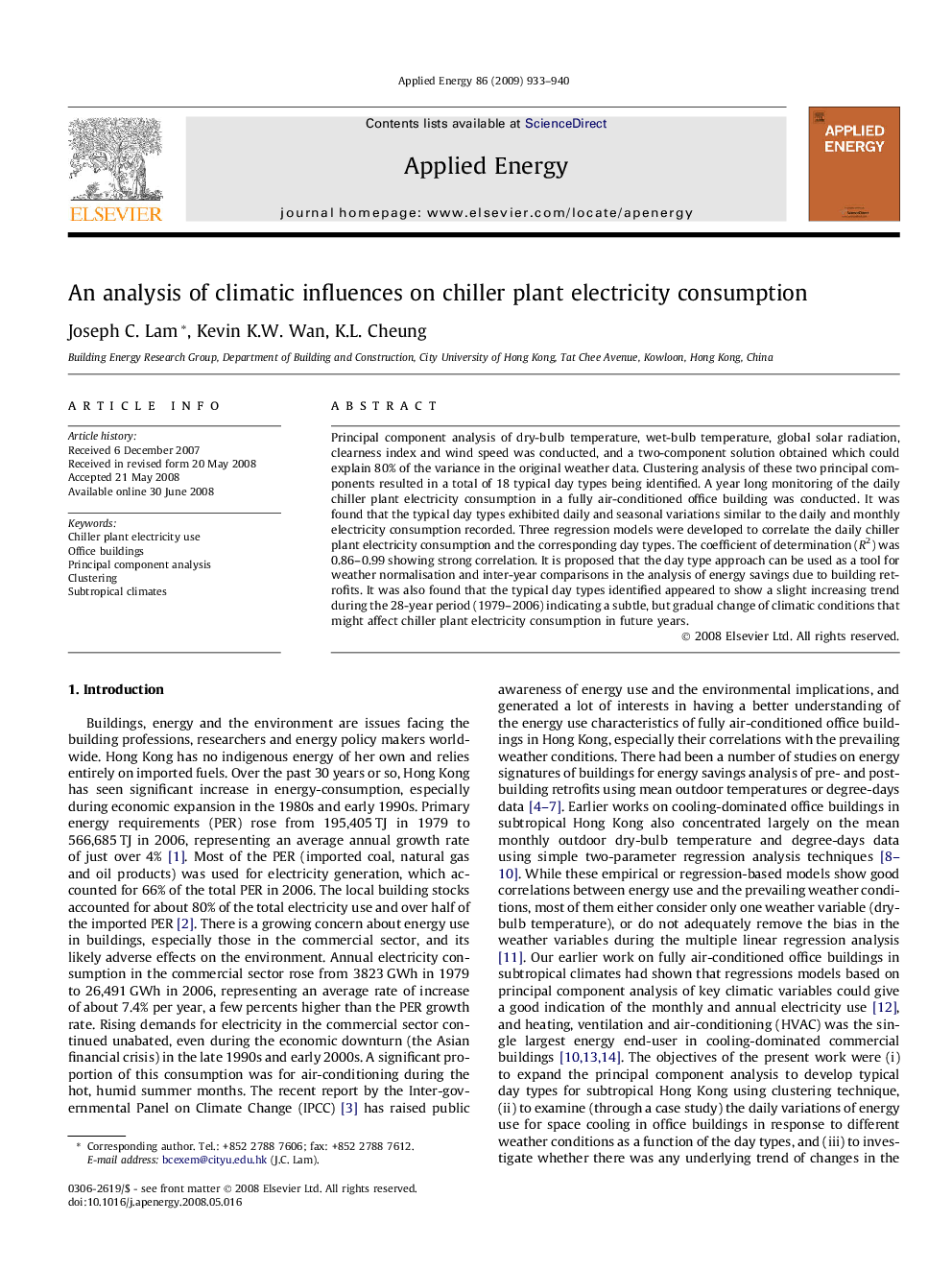| Article ID | Journal | Published Year | Pages | File Type |
|---|---|---|---|---|
| 245048 | Applied Energy | 2009 | 8 Pages |
Principal component analysis of dry-bulb temperature, wet-bulb temperature, global solar radiation, clearness index and wind speed was conducted, and a two-component solution obtained which could explain 80% of the variance in the original weather data. Clustering analysis of these two principal components resulted in a total of 18 typical day types being identified. A year long monitoring of the daily chiller plant electricity consumption in a fully air-conditioned office building was conducted. It was found that the typical day types exhibited daily and seasonal variations similar to the daily and monthly electricity consumption recorded. Three regression models were developed to correlate the daily chiller plant electricity consumption and the corresponding day types. The coefficient of determination (R2) was 0.86–0.99 showing strong correlation. It is proposed that the day type approach can be used as a tool for weather normalisation and inter-year comparisons in the analysis of energy savings due to building retrofits. It was also found that the typical day types identified appeared to show a slight increasing trend during the 28-year period (1979–2006) indicating a subtle, but gradual change of climatic conditions that might affect chiller plant electricity consumption in future years.
